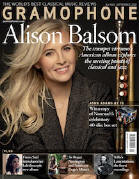Texte paru dans: / Appeared in: |
|
 |
Outil de traduction |
|
JS Bach’s six sonatas for violin and harpsichord are not as prolifically recorded as his Solo Sonatas and Partitas. Not only are there still more than enough recordings to shake a stick at, however, but the overwhelming majority of them present the six sonatas in isolation, as a cycle. And while that’s entirely reasonable and enjoyable (even when there’s no evidence to suggest Bach himself conceived them as a cycle), it’s also true that variety is the spice of life, making this vividly recorded programme from violinist Johannes Pramsohler and harpsichordist Philippe Grisvard especially engaging, presenting them not in isolation but alongside further examples composed after Bach by his contemporaries. The result? Three recitals, across three discs, offering an intriguing snapshot of how Bach’s immediate successors were influenced by his revolutionary sonata model – that is, four movements modelling the trio form’s synthesis of linear counterpoint, sonorous harmony and cantabile melody – and then proceeded in their own individual ways to imitate, distance themselves from and develop those principles.
Inevitably with Pramsohler, champion unearther of forgotten treasures that he is, there are some fabulous discoveries along the way. Take the three sonatas for violin and obbligato harpsichord published at the end of the 1750s by Bach’s former pupilturned-critic Johann Adolph Scheibe (1708-76), theorist and Kapellmeister to the King of Denmark, of which No 2 in B minor’s affecting opening Adagio stands out especially for Pramsohler and Grisvard’s graceful momentum and absence of excess sentimentality. Or for an even more sonically intriguing first recording, turn to the Sonata in B flat by one of the stars of the Berlin school, Prussian concertmaster Johann Gottlieb Graun (1702/03-71), with its highly sophisticated and quirky language full of unexpected melodic and harmonic twists and turns. The most delicious discovery among the premieres is perhaps the Sonata in A minor by one of the founding members of Prussian Crown Prince Frederick’s musical establishment, Christoph Schaffrath (1709-63), where the writing would leave us in no doubt of his Bach-fan credentials even had his manuscript copies of The Well-Tempered Clavier not survived – not because it instantly evokes Bach’s triowriting but because its sound world instead feels most obviously like a joyous homage to Bach’s organ works. In fact, such is the panache-filled toccata-esque drama of the harpsichord’s opening lines that Pramsohler’s first entry has him sounding more like a party gatecrasher than an anticipated guest, much though the ear quickly acclimatises to his dippings in and out of the action, by turns accentuating or contrasting with Grisvard’s constant stream of fast-paced sparkle.
It’s not simply for the first recordings that Pramsohler and Grisvard deserve our attention. Their respective entrances for the curtain-raising Sonata BWV1014 in B minor, each capturing its gentle melancholy via a soft upwards curve of sound, suggest a slow awakening from a place of silence – no mean feat on a harpsichord. So when finally they bring the third recital to its climax with CPE Bach’s Sonata in B minor, Wq76 – one of four large sonatas he composed in 1763 in Berlin – it feels as though we’re hearing not only a composer at his compositional zenith but also a duo at the height of their own interpretative powers: heard in the radiant glow and strength of Pramsohler’s tone, in Grisvard’s lightly worn virtuosity and in their combined mastery and balance of puckishness with nobility. In short, what a ride. |
|




